Innovations

Lone Star College-Tomball's (LSC-Tomball) leaders recognized educational technologies that will revolutionize education and reshape teaching strategies and student learning experiences years before ChatGPT gained popularity. The Internet, social media, and a wide range of educational resources had widespread digital influence, presenting both opportunities and challenges for traditional brick-and-mortar academic environments (Wiesinger & Beliveau, 2016). The college strived to stay at the forefront of the newest trends and challenges, which prompted the development of proactive strategies...
In 2014, Dalton and Crosby noted that, “colleges and universities have long recognized that helping students to become personally connected and committed early in college is critical to their successful retention and graduation” (Abstract). However, feeling connected to an institution and its academic process can be “especially challenging for new students who must quickly master a wide range of academic, personal, and social adjustments” (Dalton & Crosby, 2014, Abstract).
In a mission to retain students and guide them toward success, Rio Salado College, an online community college based...
Tags:

The Emerging Technologies Institute (ETI) at Foothill College originated in summer 2022 as a way for virtual reality (VR) to be integrated into education. ETI’s mission is to give all staff, faculty, students, and administrators a chance to engage with emerging technologies that have the potential to shape change in society and education. Opportunities include interacting in physical lab settings such as Foothill’s VR lab, where faculty and students can explore how technology can provide more immersive learning experiences, and participating in research projects, where they engage with...
Tags:
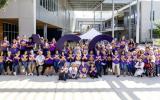
Change is inevitable in higher education, presenting both challenges and opportunities. Leading effectively through change requires courage, innovation, and compassion. Leaders in higher education must not only navigate these transformations but embrace them as opportunities for growth, innovation, and meaningful progress.
The Changing Landscape of Higher Education
Moore’s Law, the 1965 prediction that computing power would double every two years, shaped technological progress for generations (Intel, 2023). But in 2022, this foundational rule crumbled, marking a pivotal shift in how...
Tags:

In July 2022, Rogue Community College’s (RCC) new President, Dr. Randy Weber, energized the college with an initiative to stabilize enrollment. This was identified as the first of five institutional priorities. Leveraging his expertise in strategic enrollment management (SEM), Weber, in collaboration with the newly appointed Dean of Enrollment Management, spearheaded a strategic shift. This transition moved the college from a narrow focus on recruitment and new students to a more comprehensive approach, embedding American Association of Collegiate Registrars and Admissions Officers SEM...
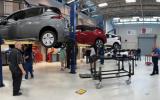
"Find the need and endeavor to meet it" is the seminal quote from David A. Sinclair, Director of YMCA of Dayton, later named Sinclair Community College, from 1887 to 1902. This powerful message still serves as a mantra for the institution’s faculty and staff. The original mission of D. A. Sinclair and the YMCA was to support the Dayton community by providing services such as adult education courses and job training (YMCA of Greater Dayton, n.d.). Subsequently, due to the proliferation of automobiles in the late 1800s to early 1900s, an automotive technology curriculum was developed by the...
Tags:
Whether or not college pays off financially, and to whom, is an increasingly important question for institutions of higher education and their students. Career reasons are top motivators for students when deciding to enroll in postsecondary education, yet public perception has declined for the past five years regarding whether college is worth the cost (Lumina Foundation, 2023; Nguyen et al., 2024). This issue is especially salient for community colleges, underscoring the need for robust evidence that students of all backgrounds can attain positive post-completion career outcomes.
Measuring...

The integration of BrickMMO into Humber Polytechnic’s programming fundamentals program in fall 2023 provided students with the opportunity to learn through a workplace integrated classroom (WIC) teaching methodology which resulted in increased learning, opportunities for solutions-based problem solving, and cross-program collaboration projects. BrickMMO is a smart city education platform made of a 1:45 scale smart city designed to provide students with a hands-on sandbox, or safe testing environment, to apply their newly acquired skills. This project was originally envisioned to develop a...
Tags:
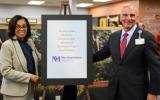
Moraine Valley Community College is committed to providing students with the resources they need to be successful. Understanding that students cannot accomplish their educational goals if they face challenges in meeting their basic needs, the college developed the Project Care initiative, which offers an array of wraparound services and resources to help them meet those needs, ultimately allowing them to better focus on their education.
According to Teresa Hannon, a counselor at the college’s Counseling and Career Development Center (CCDC), the initial focus of Project Care was the campus...
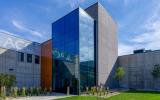
Arapahoe Community College (ACC) celebrated the completion of Phase 1 of its Health Innovation Center in October 2024 with healthcare and education partners, state and county officials, donors, civic leaders, and ACC students and employees. The Center’s simulated education spaces are used across ACC’s healthcare programs to improve functional collaboration between disciplines while preparing students to better serve patients. This expansion of healthcare programming, which began as a vision in 2017 before finally commencing in May 2023 with the renovation of ACC’s existing two-level annex...

Established in 1970, Rogue Community College (RCC) serves Oregon residents in Jackson and Josephine counties at campuses in Grants Pass, Medford, and White City. A public two-year community college, RCC offers multiple transfer degrees; more than 80 career and technical education degrees or certificates; a variety of workforce and short-term training, academic skills, and continuing and community education classes; and services to the business community.
Developing College Priorities
After experiencing the fastest enrollment decline in the state over a five-year period, RCC was faced with the...
Tags:

The Seattle Promise Initiative, a pioneering program launched by the City of Seattle, aims to ensure that all public high school graduates in Seattle have access to higher education without the financial burden of tuition. An innovative component of this initiative is the Path to UW program, a collaboration between the Seattle Department of Education and Early Learning, Seattle Colleges, and University of Washington (UW). The program provides targeted support to Seattle Promise students as they transfer from community colleges to one of the most competitive universities in the nation....
Tags:
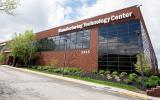
In fall 2024, Cuyahoga Community College (Tri-C) began offering its first bachelor’s degree: a Bachelor of Applied Science in integrated digital manufacturing (IDM) engineering technology. To understand why Tri-C developed a four-year IDM degree, we need to look at some historic and recent economic data about Northeast Ohio.
Ohio has held a notable position in the manufacturing sector, typically ranked number three in the U.S. with over 14,000 manufacturing companies (IndustrySelect, 2024). More importantly, Northeast Ohio is a crucial player within the state, with over 6,000 manufacturers in...

The rapid growth of competitive eSports over the past 10 years has led to its emergence as a cocurricular program on hundreds of college campuses. Projected to grow to over a two billion dollar industry by the end of 2024 and forecasted to be a nine billion dollar industry by 2032 (Fortune Business Insights, 2024), there is a growing need on college campuses not only to provide opportunities for student engagement via competitive eSports programs but also to develop new and creative degree programs to support this growing industry. This article explores the development of the eSports program...
Tags:

When St. Louis resident Bobbie Simmons enrolled at St. Louis Community College (STLCC) to study medical coding, it seemed like she was finally on the path to a rewarding career in a high-demand field. Then a serious health issue set her back, threatening her ability to maintain a dependable source of income for rent. “It was hard focusing on my schoolwork when I didn’t know if I’d have a roof over my head,” said Simmons. Her story is not unique; many students at STLCC face similar challenges.
Thanks to a new STLCC program, students like Simmons, who face housing insecurity, now have a...
Tags:

In a new spin on the challenge of meeting students where they are, Santa Fe College is serving one student a time, at scale. The SF Achieve initiative offers a unique take on a Promise Program by providing not just financial help, but direct college coaching and mentoring to students in their high schools. College specialists, embedded at local schools everyday throughout the school year, meet with students regularly, get to know them, and help them understand how a college education can serve as a launching pad for their goals and dreams. SF Achieve is literally meeting students where they...
Tags:

When I was young, I used to look up at the night sky and dream. I lived in Atlanta, a location filled with light pollution, so it was rare that I saw more than a few weak pinpoints of light scattered around the moon. Still, I pondered. Where did the stars come from? Did everyone see the same sky? How did the moon change shape?
Since the dawn of humanity, people just like me have looked up to the sky and wondered. Cultures across the globe have developed mythologies about the cosmos, from stories of the creation of the sun and moon to depictions of constellations. Egyptians built the pyramids...
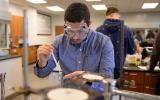
Incoming first-year students at Moraine Valley Community College who are interested in pursuing a degree in science, technology, engineering, and mathematics (STEM) have an opportunity to participate in the Greer Scholars Program, which seeks to diversify STEM careers by funding and supporting students who are underrepresented in these fields.
The Greer Foundation, which champions organizations committed to helping people improve their lives, chose Moraine Valley as the first Chicago-area community college grantee to support a cohort of students as Greer Scholars. The foundation has been...
Tags:

Noncredit workforce education has long been an important function of community colleges. These programs typically prepare students for industry-sponsored certifications, licensures, and/or college-bestowed certificates. They have traditionally been siloed away from credit programs, and, thus, do not have to match credit hour requirements and semester schedules. Yet, in recent years, the landscape of noncredit workforce education—in terms of funding availability, program offerings, and its stature and location within colleges—has shifted dramatically (Van Noy & Hughes, 2022).
Changes to...
Tags:

Chandler-Gilbert Community College’s (CGCC) Title V and Enrollment Services teams offered a career exploration curriculum for ICAN youth in summer 2024. ICAN is a free, local program that provides K-12 students in Phoenix, Arizona’s East Valley with programs for educational development.
The relationship between CGCC and ICAN began in fall 2023 when the college was invited to participate in a parent information event hosted by a local school district. During this event, parents raised numerous questions about attending college, including affordability, accessibility, and admissions criteria....
Tags:










